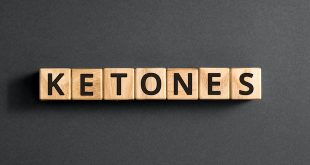Use these diabetes definitions to find the meanings of common medical terms related to diabetes.
A
A1C – A blood glucose measure over time. An A1C test gives a picture of average blood glucose control over the previous 2 to 3 months. This can provide valuable information on the overall diabetes management picture, helping the diabetes healthcare team judge how well the treatment plan is working.
ABCDE’s - Remembering the ABCDE’s will help with diabetes management. A is for control of A1C. B is for blood pressure control, C is for keeping cholesterol levels in the target range, D is for drugs to protect your heart, E is for exercise and eating.
Albumin – A protein that occurs in urine. High levels of albumin can be a sign of kidney disease.
Arteries – Large blood vessels that carry blood with oxygen to all parts of the body from the heart.
Arteriosclerosis – hardening of the arteries.
Aspartame – One of several sugar substitutes. Used as an ingredient in cereals etc. and in the branded sweetener, Equal™. 200 times sweeter than sugar.
B
Blood Glucose – The main sugar contained in the blood and the body’s main source of fuel. Sometimes referred to as blood sugar.
Blood Glucose Level Targets – The blood glucose level range recommended by a diabetes healthcare professional for successful diabetes management.
Blood Glucose Meters – Small, portable devices that measure the blood glucose level of a drop of blood. Various different types are available. See our Diabetes Product Directory.
Blood Glucose Monitoring - Blood glucose levels keep changing all the time. Regular checking helps people with diabetes stay within target blood glucose levels.
Blood Glucose Sensor - A blood glucose sensor or continuous glucose monitor, is a device that measures glucose levels continuously, 24 hours a day. The monitor is inserted under the skin usually on the stomach.
Blood Pressure – The force of blood against the artery walls. Blood pressure readings are shown as two numbers and are measured in millimeters of mercury. The top number is the systolic blood pressure and represents the maximum pressure exerted when the heart contracts. The second or bottom number is the diastolic pressure and this represents the minimum pressure in the arteries when the heart is at rest. Many people with diabetes suffer from high blood pressure.
Body Mass Index (BMI) – A method used to calculate if you are a healthy weight for your height.
C
C-peptide – A substance released into the bloodstream by the pancreas in equal amounts to insulin. A C-peptide test can gauge how much insulin is being produced by the body.
Callus – A hard, thickened area of skin, usually on the feet.
Carbohydrate – A food nutrient that has a greater effect on blood glucose than other types of food. Carbohydrates are found in starches, vegetables, some dairy products, fruits and sugars.
Carb counting – Carb counting keeps track of carbohydrates in food that is eaten during a meal and over the course of a day. It is often used to determine how much insulin is required for the amount eaten.
Cardiologist – A medical specialist in heart conditions.
Cardiovascular Disease – Problems with the heart and blood vessels.
Cataract – The clouding of the eye lens.
Certified Diabetes Educator (CDE) – A healthcare professional who obtains additional skills and knowledge to educate people about their diabetes management.
Cholesterol – A fat found in the blood. It is produced by the liver and is also found in some foods.
Creatinine – A waste product that is removed from the body by the kidneys. In kidney disease, the level of creatinine rises.
D
Dehydration – Dehydration occurs when too much fluid is lost from the body due to sweating, diarrhea, vomiting, or frequent urinating.
Diabetes Complications – Harmful effects of diabetes, including damage to the heart, blood vessels, eyes, nervous system, kidneys, teeth and gums, and feet. Careful diabetes management can help to delay or prevent complications.
Diabetes Educator – A healthcare professional who specializes in the education and treatment of people with diabetes, encouraging them to manage their condition.
Diabetic Ketoacidosis (DKA) – An emergency condition of very high blood glucose levels combined with a severe lack of insulin. The body starts breaking down body fat for energy and harmful substances called ketones build in the blood, affecting the acid base balance of the body.
Diabetic Retinopathy – A diabetes eye complication with damage to small blood vessels in the retina. There may be vision loss.
Diabetologist – A doctor who specializes in diabetes.
Dietitian – A healthcare professional who educates people about healthy eating, meal planning, weight management, and food related to diabetes management.
E
Edema – swelling caused by excess fluid in the body.
Empowerment - Patient empowerment is defined as helping patients make informed decisions to take responsibility for their own life.
Endocrine Glands – These are the body’s main producer of hormones. The islets in the pancreas are the endocrine glands that release insulin into the blood.
Endocrinologist – A medical specialist who focuses on endocrine gland conditions, such as diabetes.
Exercise Electrocardiogram (ECG) Stress Test – A test that measures how the heart is affected by physical activity.
F
Fat – One of the main food nutrients and the one with the highest calorie content. Fat is found in meats and fish, some dairy foods, nuts and some vegetables like avocados. There are different types of fat. See saturated fat, unsaturated fat, trans fats.
Fibre – The part of a food that the body cannot digest. A high fibre diet may help to delay or prevent some diseases. Whole grain foods, vegetables, fruits and nuts are all high-fibre foods.
G
Gestational Diabetes Mellitus (GDM) – Diabetes that only occurs during pregnancy. It usually disappears once the baby is born, but the mother has increased risk of developing type 2 diabetes at a later time.
Gingivitis – A condition of the gums that can lead to gum disease. Inflammation and bleeding may be present. Gingivitis is more common in people with diabetes.
Glaucoma – An eye condition in which pressure builds up in the eyeball. It may lead to optic nerve damage and vision loss.
Glucagon – A hormone produced by the pancreas, It increases blood glucose levels, having the opposite effect to insulin. Glucagon can also be injected to treat hypoglycemia (low blood glucose).
Glucose – A type of blood sugar that is created when carbohydrates are digested. Blood glucose is the body’s main source of fuel.
Glycemic Index – A ranking of foods that contain carbohydrates, based upon the speed with which they affect blood glucose levels compared to a standard food reference.
H
HDL Cholesterol – HDL stands for high density lipoprotein cholesterol. It is a fat found in the blood and is often called the ‘good’ cholesterol because it takes harmful excess cholesterol to the liver for removal from the body.
Hyperglycemia – Higher than average blood glucose levels.
Hypercholesterolemia – Higher than average cholesterol levels in the blood.
Hypertension – High blood pressure.
Hypoglycemia – Low blood glucose levels defined as blood glucose reading less than 4 mmol/L.
I
Impaired Fasting Glucose (IFG) – A term used when a test taken after an 8 to 12-hour fast shows blood glucose levels are higher than normal but not high enough for a diagnosis of diabetes. A person with this condition may be diagnosed with prediabetes.
Impaired Glucose Tolerance (IGT) – A condition where blood glucose levels are higher than normal but not high enough for a diagnosis of diabetes. Also known as prediabetes.
Insulin Lipohypertrophy– A thickened, often hard area that develops at injection sites due to repeated use of the same site
Injection Site Rotation – Changing the exact spot where insulin is injected to avoid lipohypertrophy.
Insulin – The hormone released by the pancreas to help the body convert blood glucose into energy.
Insulin Pen – A pen-sized injection device that holds insulin cartridges and can be used instead of a syringe to inject insulin.
Insulin Pump – A small battery-operated device that delivers a continuous supply of insulin through a needle inserted under the skin.
Insulin Receptors – The outer cell areas that allow cells to bind with insulin in the blood.
Insulin Resistance – The body’s inability to efficiently use the insulin it produces.
J
Juvenile Diabetes – Juvenile Diabetes or Juvenile-onset Diabetes used to be the term used for type 1 diabetes. It is no longer used since adults are also sometimes diagnosed with type 1 diabetes and many children are developing type 2 diabetes.
K
Ketoacidosis – Also known as Diabetic Ketoacidosis (DKA). An emergency condition of very high blood glucose levels combined with a severe lack of insulin. The body starts breaking down body fat for energy and harmful substances called ketones build in the blood.
Ketones – A chemical produced when the body breaks down body fat to use as energy, in reaction to a shortage of insulin.
L
Lancet – A sharp, pointed instrument used for pricking the finger during blood glucose monitoring.
LDL Cholesterol – Low-density lipoprotein cholesterol. A fat found in the blood that transports cholesterol around the body for use by cells. It also deposits the cholesterol on artery walls. It is sometimes known as the ‘bad’ cholesterol, because higher than normal levels of LDL cholesterol can contribute to heart disease.
M
Macular Edema – Swelling of the macula, which is the area near the retina centre of the eye that is used for reading and seeing fine details.
mg/dL – milligrams per deciliter, which is the way that blood glucose is measured in the U.S. In Canada, the unit used is mmol/L. To convert mg/dL to mmol/L, divide by 18.
mmol/L – Stands for millimoles per litre, which is the way that blood glucose is measured in Canada. To convert mmol/L to the U.S. mg/dL measurement unit, multiply by 18.
Monounsaturated Fat – Healthy fats found in foods like avocados and nuts, and in oils like olive oil, grape seed oil and canola oil.
N
Nephrologist – A doctor who specializes in kidney conditions.
Nephropathy – Disease of the kidneys.
Neurologist – A doctor who specializes in nervous system conditions.
Neuropathy – Disease of the nervous system.
Nocturnal Hypoglycemia – Low blood glucose levels during the night, often during sleep.
Normoglycemia – Normal blood glucose levels.
O
Omega-3 Fat – A healthy polyunsaturated fat found in oily fish and in some seeds and nuts. A diet rich in omega-3 fats may help reduce the risk of heart disease by improving cholesterol levels.
Ophthalmologist – A doctor who specializes in eye conditions.
Optometrist – A health professional who examines the eyes to detect eye problems and prescribe glasses or other vision aids.
Oral Glucose Tolerance Test (OGTT) – A test taken after an overnight fast to determine blood glucose levels. A blood sample is taken, after which the person with suspected prediabetes or diabetes drinks a high-glucose beverage. Blood samples are then taken at two and three hours after taking the beverage..
P
Pancreas – The organ in the body that produces insulin and glucagon. It also creates enzymes for digestion.
Pancreas Transplantation – Surgical replacement of the pancreas of a person with diabetes with a healthy pancreas from a donor.
Pediatrician – A doctor who specializes in treating children.
Periodontist – A doctor who specializes in gum conditions.
Pharmacist – A qualified healthcare professional who dispenses medication and who can provide recommendations for optimal use of their medications. They can also educate people about supplies related to diabetes management i.e. blood glucose meters, sharps disposal etc.
Podiatrist – A healthcare professional who specializes in conditions of the feet.
Polyunsaturated Fats – Healthy fats found in oily fish, fish oil, seafood, grains, and soybeans.
Post-prandial – Following meals.
Prediabetes– A condition in which blood glucose levels are higher than normal but not sufficiently high for a diagnosis of type 2 diabetes. People with prediabetes are at high risk of developing type 2 diabetes, so a healthy living routine is important, together with careful monitoring.
Pre-prandial – Before meals.
R
Resistance Exercise – A form of exercise such as weight-lifting that strengthens muscles. It is recommended for all people with diabetes.
S
Saccharin – A sugar substitute. Should not be taken in pregnancy.
Saturated Fats – Unhealthy fats found in foods like butter, dairy foods, lard, and coconut milk. A diet high in saturated fats can increase the risk of heart disease.
Self-monitoring of Blood glucose (SMBG) – Blood checking by the patient or a caregiver using blood glucose meters to monitor their blood glucose levels.
SME- self-management education; diabetes educators help people with diabetes acquire the knowledge and skills necessary to successfully manage their diabetes.
Sharps Container – A container used for the appropriate disposal of sharp objects like lancets and needles.
Sodium – The key component of salt. High sodium diets can contribute to high blood pressure and increase the risk of heart disease.
Statins – Medications prescribed to reduce ‘bad’ LDL-cholesterol levels.
Sucralose – This is a sweetener that is made from sugar but it does not increase blood glucose levels. It is manufactured under the Splenda® brand in Canada.
T
Total Cholesterol – The combined total of all types of cholesterol in the blood.
Trans fats – Trans fats lower ‘good’ HDL cholesterol levels and raise ‘bad’ LDL cholesterol levels, which can increase the risk of heart disease. Trans fats occur naturally in small amounts in some foods but are mainly found as an added ingredient in fast-foods and other highly processed foods. It is recommended that these fats be avoided in a healthy eating plan.
Tryglyceride – Found in animal fats and vegetable oil. High tryglyceride levels in the body can raise the risk of heart disease.
Type 1 Diabetes - Type 1 diabetes usually first occurs between childhood and adolescence, although it can appear at any age. In this form of diabetes, the pancreas stops producing insulin so the glucose cannot get into the cells to do its job as the body’s fuel.
Type 2 Diabetes - This is the most common form of diabetes, and affects millions of Canadians. Onset is usually after the age of 40, although it can occur in younger people. In type 2 diabetes, the body either produces insufficient insulin or is unable to use it effectively.
U
Unsaturated Fats – Healthy fats found in foods like nuts, avocados, and soya beans, and in oils like olive oil and canola oil.
V
Vascular Disease – Disease of the blood vessels.
Vein – A blood vessel that takes unoxgenated blood back to the heart.
X
Xylitol – This is a carbohydrate based sweetener that is found in plants and used as a substitute for sugar. Like sugar, it contains some calories.
 Diabetes Care Community Learn, connect and care
Diabetes Care Community Learn, connect and care



